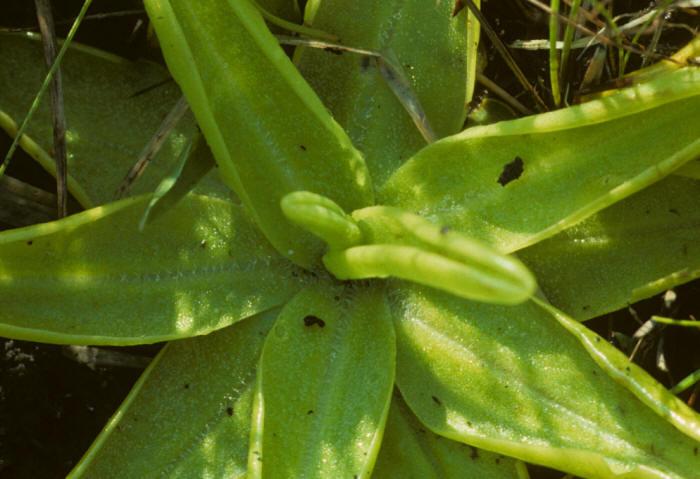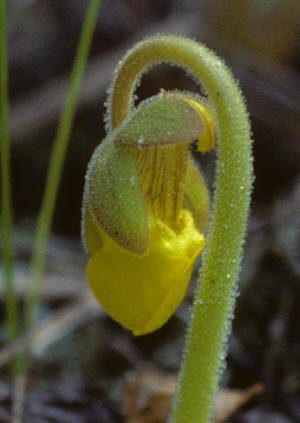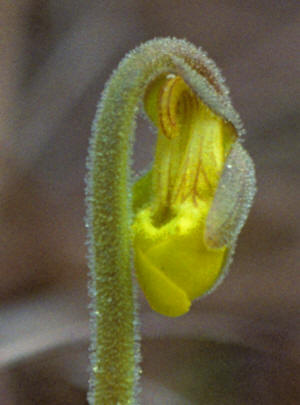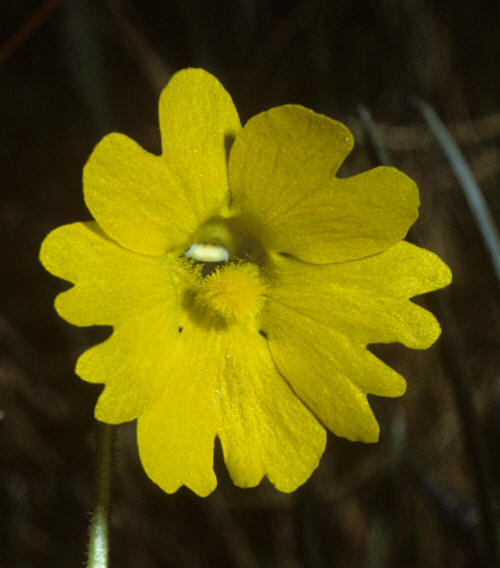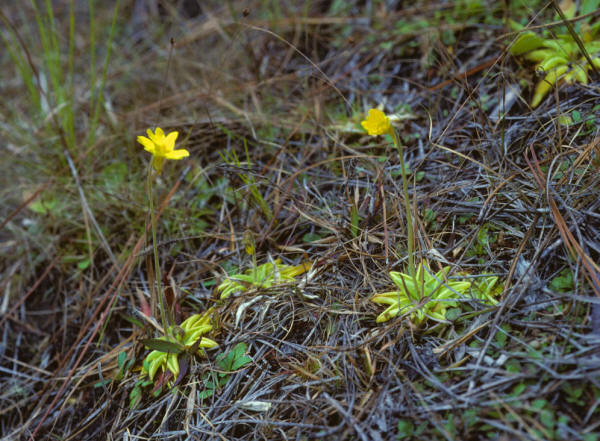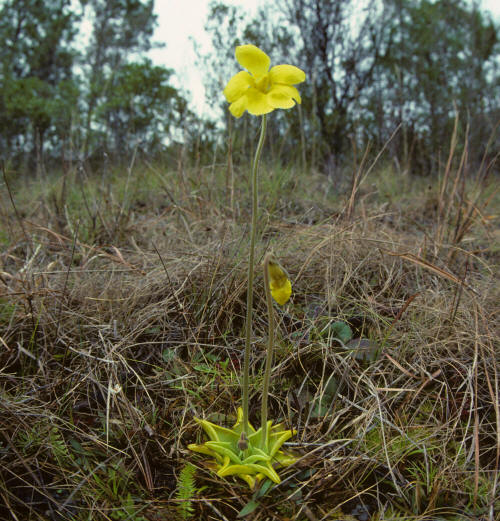|
Carnivorous Plants Story
|
||
|
|
This is a yellow-flowered butterwort growing in the southeastern coastal plain of the U.S. The grass covered savanna is a typical habitat for this species, as in this picture. The plant forms a light green rosette of leaves ranging somewhere around 5-10 cm across. The leaf edges are sharply rolled upward, making a narrow, pointed leaf. This butterwort produces a bright yellow flower measuring 2-3 cm across in the early spring. A tall scape (flower stem) often reaches 30-35cm in height, supporting a single, somewhat dangling flower. I have seen some specimens in the field with scapes reaching 35-40 cm when seeds are set. This is due to the secondary growth of the scape after fertilization, a phenomenon observed generally in many butterworts. The tall scapes are glandular at least early in the flowering. There is another species in the same general area which produces a purplish flower (P. caerulea). The leaves of these two species are so similar that it is practically impossible to tell them apart outside of the flowering season. Since this picture below was taken during the summer without flower, I am simply guessing this is a yellow-flowered species. A plant of P. lutea tends to be a slightly larger, but that is not a very sure indicator. In the field, if you find a flower bud in the rosette center in the early spring, however small , it will give away the hint of flower color to emerge, and the identification is usually simple.
February to May is the flowering season for P. lutea. The flower scape as well as bracls is also heavily covered with stalked glands secreting a sticky mucilage. small gnats are often seen trapped by these hairs. A typical flower has only one incision per each of the five lobes, though flowers containing lobes with multiple incisions are also found. Note that the flower is zygomorphic and it always maintains bilateral symmetry even for incision patterns. A yellow, hair-covered projection known as a palate grows on the lower lip of the corolla tube and, when the flower is open, is strongly exserted. The whitish stigma surface can be seen on the upper corolla tube surface.
The plant does not form a hibernaculum (winter bud) during the cold winter months. The flower emerges from the center of rosette leaves of the previous season. New leaves in earnest appear after the flower, providing a somewhat temporal separation of pollination and prey-trapping. Note a minor "cheating" by glandular hairs covering the flower step, although these are capable of trapping only tiny gnats and the like, and these puny insects probably do not contribute to pollination of flowers. So why not earning an extra energy by moonlighting? But then, the glandular leaves themselves are only capable of catching tiny insects after all. I suspect the pollinators for the butterworts in general might be too large to be trapped by their flypaper trap. This might remove altogether the general prey/pollinator dilemma faced by many carnivorous plants (though we do not know the major pollinators for the butterworts).
A triumphant blossom of early spring. A
somewhat sleepy grassland of the southeastern savanna is awaken by brilliant
yellow blossoms of P. lutea, signaling the end of winter. A tall scape
shoots up into the sky holding the large flower at the tip measuring 2.0-3.0 cm across. The scape often reaches 30 cm or more in
nature. The rosette just came out of a semi-winter dormancy (though no
hibernacula are formed). In numerous occasions, I have seen a tiny snail nibbling
away a portion of a delicious
succulent butterwort leaf in the wild. Introduction Venus Flytrap Sundews Pitcher Plants Cobra Plant Butterworts Bladderworts
|
|
